Jet Engine Exhaust is Turned into Electricity to Power Dallas International Airport
India’s first flying taxi prototype unveiled at auto expo 2025

Supersonic jets are making a comeback – but despite the hype, don’t expect to book yet
Late last week, American company Boom Supersonic flew faster than the speed of sound with its XB-1 supersonic demonstrator aircraft. It’s now the first piloted non-military aircraft to break the sound barrier since the Concorde was retired from service in 2003.
It’s the first step in Boom’s ambitious goal to have supersonic airliners carry passengers by 2029.
But what exactly is supersonic travel? There are good reasons why it’s not more common, despite the hype.
What is supersonic flight?
The Mach number is defined as a plane’s speed divided by the speed that sound waves move through the air. To “break the sound barrier” means to fly faster than the speed of sound, with Mach numbers greater than 1.
The Mach number is an important ratio: as a plane flies, it disturbs the air in front of it. These disturbances move at the speed of sound. In supersonic flight these disturbances combine to form shock waves around the vehicle.
When people say you can see a fighter jet before you hear it, they’re referring to supersonic flight: fighter jets can travel at around Mach 2.
The sound from the fighter jet is trapped inside its shock wave; until the shock wave moves to your position on the ground, you won’t hear the plane.
The allure of supersonic travel
For efficiency reasons, most passenger jets cruise slightly slower than the speed of sound, at around Mach 0.8 (this is subsonic flight).
Boom plans to build an airliner called Overture that can fly at Mach 1.7. Flying supersonically can drastically decrease flight times. The company claims a trip from New York to Rome on Overture could take just four hours and 40 minutes, instead of eight hours.
Boom isn’t the only company working on this lofty goal. American firm Spike Aerospace is also developing a supersonic business jet, with the tagline “delivering the world in half the time”.
This is the value proposition of supersonic passenger travel.
In limited ways, it did already exist in the 20th century. However, due to timing, bad luck and the laws of physics, it didn’t continue.
Remember the Concorde?
Designs for supersonic airliners began in the mid-20th century, and by the 1970s we had supersonic passenger flight.
There was the little-known Russian Tupolev-144 and Concorde, a Franco-British supersonic airliner operated by British Airways and Air France from 1976 to 2003.
Concorde had a capacity of up to 128 passengers and cruised at Mach 2. It regularly travelled from London to New York in around three hours. The flights were expensive, mainly shuttling business people and the rich and famous.
Why supersonic passenger flight didn’t take off
Concorde was designed in the 1960s when it seemed like supersonic passenger transport was going to be the next big thing.
Instead, the Boeing 747 entered commercial service in 1970. Cheap, large and efficient airliners like it blew Concorde out of the water.
Designed to cruise efficiently at supersonic speeds, Concorde was extremely fuel inefficient when taking off and accelerating. Concorde’s expensive, “gas guzzling” nature was a complaint levelled against it for most of its lifetime.
A catastrophic 1973 Paris air show crash of the competing Russian airliner, Tupolev Tu-144, also shifted public perception on supersonic flight safety at a time when many airlines were considering whether or not to purchase Concordes.
Only 20 Concordes were manufactured out of the planned 100. It is still disputed today whether Concorde ever made money for the airlines who operated it.
Noise is a real problem for supersonic flight
Remember the fighter jets? When a plane travels supersonically, its shock waves propagate to the ground, causing loud disturbances called sonic booms. In extreme cases they can shatter windows and damage buildings.
In the early 1970s, sonic boom concerns led the United States government to ban supersonic passenger flight over land in the US. This hurt the Concorde’s potential market, hence its only two regular routes were trans-Atlantic flights principally over the water.
The Concorde was also a very loud plane at take off, since it needed a lot of thrust to leave the ground.
The future of supersonic travel
A future for supersonic travel relies on solving some or all of the issues Concorde faced.
NASA and Lockheed Martin’s Quesst project aims to show sonic boom can be dissipated to manageable levels. They plan to fly their X-59 supersonic aircraft over US cities and gauge responses from citizens.
Quesst aims to use the geometry of the X-59, with a long elongated nose, to dissipate sonic booms to a weak “thump”, hopefully allowing supersonic airliners to travel over land in the future.
Spike Aerospace’s Spike S-512 Diplomat concept also aims to be a “quiet” supersonic aircraft with a less disruptive sonic boom.
Can Boom surpass Concorde?
Boom Supersonic don’t plan to fly supersonically over land. Their plan is to fly over land at Mach 0.94, which they claim will allow 20% faster overland travel than standard passenger airliners, even subsonically.
They also claim the design of their engines will ensure Overture is no louder than modern subsonic airliners when it takes off.
In terms of gas guzzling, they plan to use up to 100% sustainable aviation fuel to reduce emissions and their carbon footprint.
Concorde was made of aluminium using design tools available in the 1960s. Modern design methods and modern aerospace materials such as titanium and carbon fibre should also allow Overture and similar craft to weigh much less than Concorde, improving efficiency.
While Boom are currently receiving a lot of interest, with orders from many airlines, Concorde did have similar commitment before it become available. Most of it didn’t eventuate.
Additionally, Concorde was the product of an analogue era when the idea of flying to London or New York for the day for an important business meeting seemed like a necessary thing. In a world of remote work and video meetings, is there still a need for a supersonic airliner in the 2020s?
For now, supersonic airliners like Overture are likely to remain in the realm of the rich and famous, like Concorde did. But with modern technological advances, it will be interesting to see whether supersonic passenger travel once again becomes reality – or even goes mainstream. Only time will tell.![]()
Chris James, UQ Amplify Senior Lecturer, Centre for Hypersonics, School of Mechanical and Mining Engineering, The University of Queensland
This article is republished from The Conversation under a Creative Commons license. Read the original article.
New Carbon Fiber Batteries Could Form the Actual Framework of Cars and Airplanes
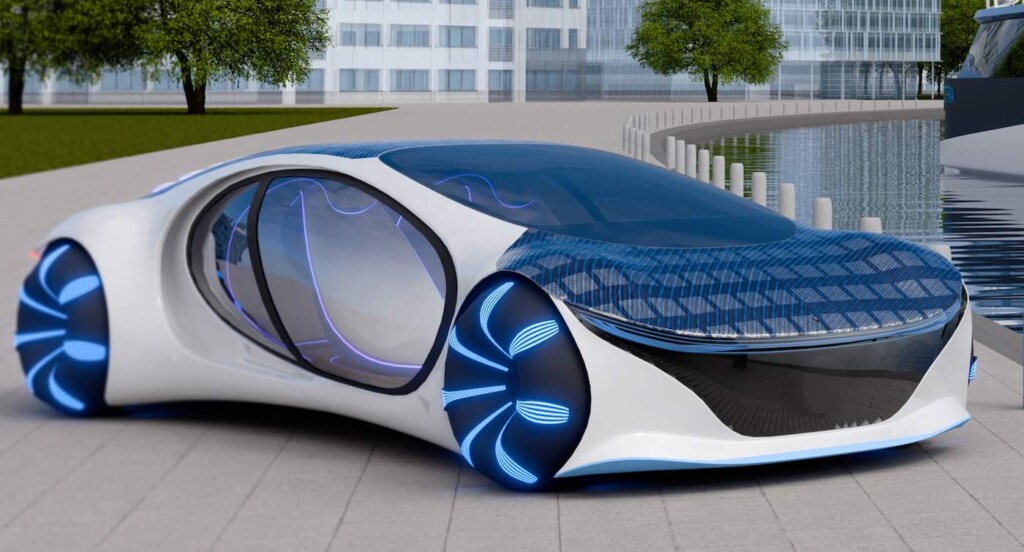 Artist impression of vehicle partly constructed with batteries made of carbon fibre composite stiff as aluminum – Chalmers University of Technology in Sweden / Henrik Sandsjö / SWNS
Artist impression of vehicle partly constructed with batteries made of carbon fibre composite stiff as aluminum – Chalmers University of Technology in Sweden / Henrik Sandsjö / SWNS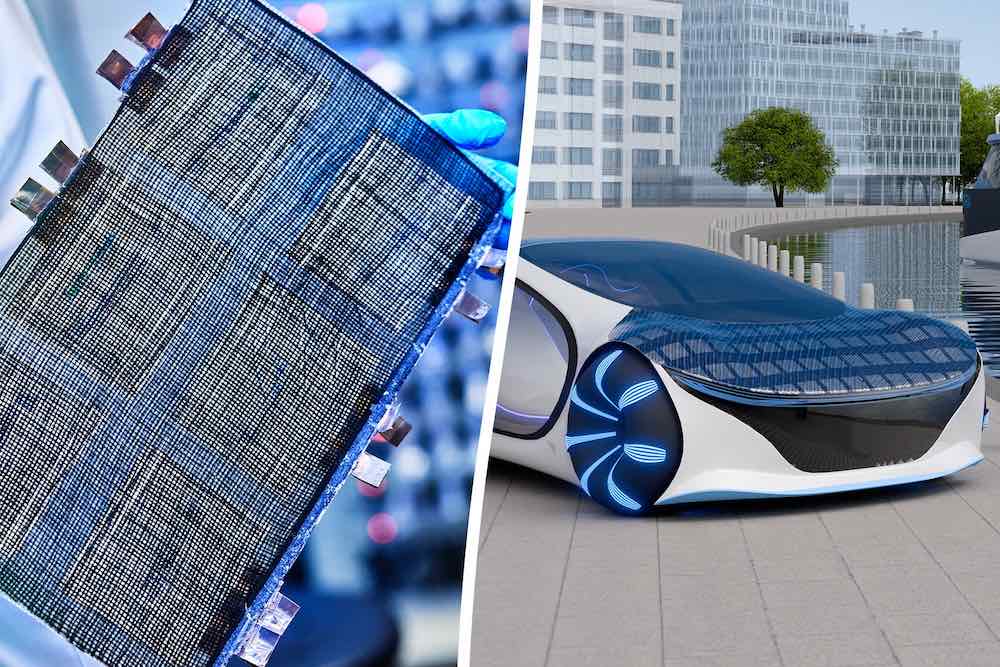
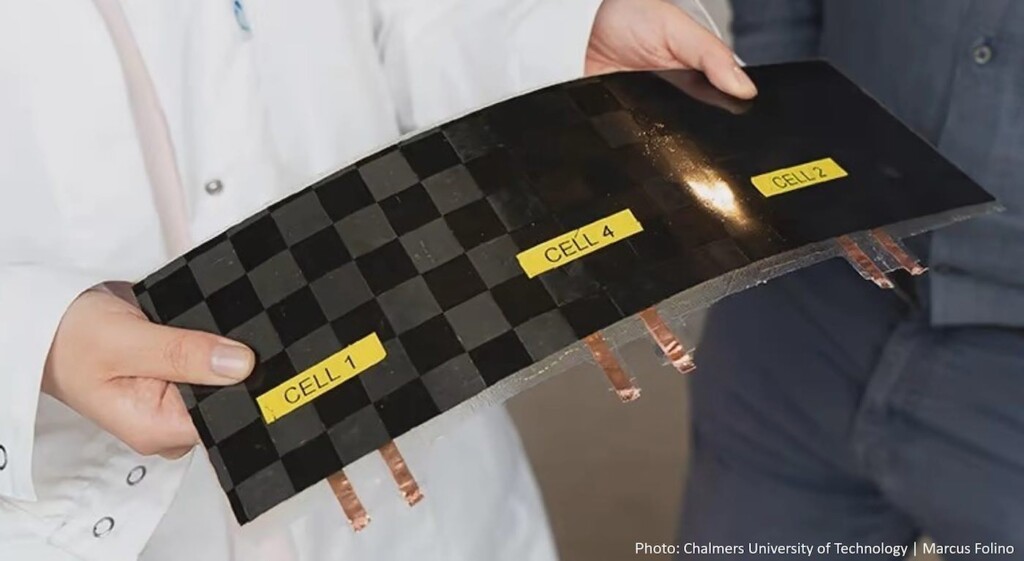
Anand Mahindra praises IIT-Madras startup for developing electric flying taxi

Wayve secures $1bn in funding for AI-powered autonomous vehicles

The Car Fueled Entirely by the Sun Takes Huge Step Towards Production
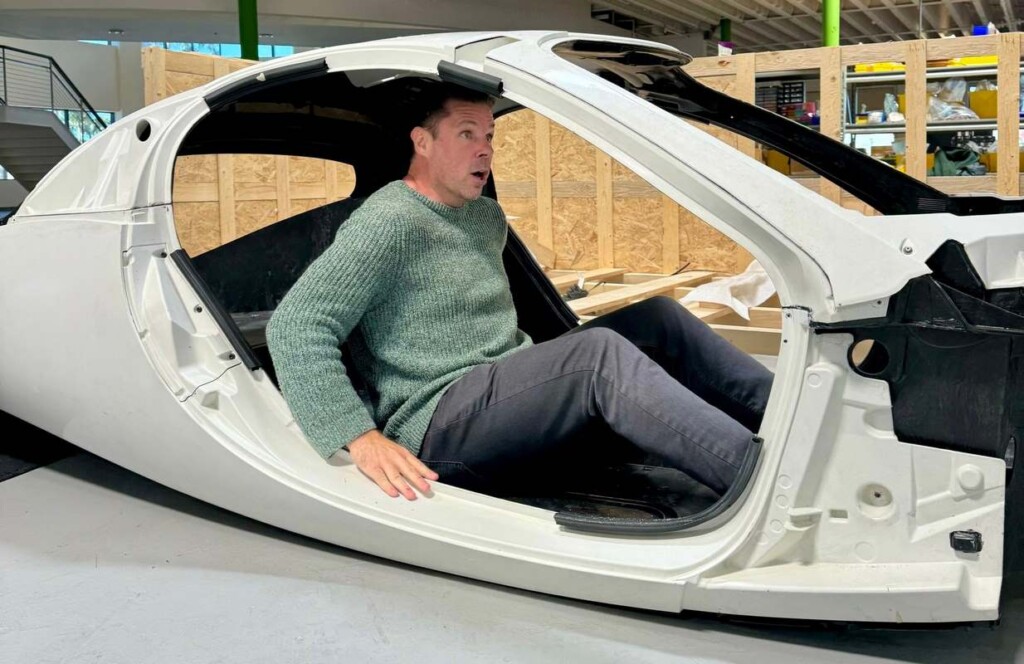 credit – Aptera, via X
credit – Aptera, via XWorld's first 100% hydrogen-powered train now runs in Germany
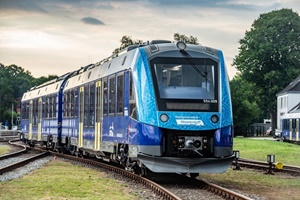
Tata Motors unveils futuristic `Ziptron' electric mobility technology
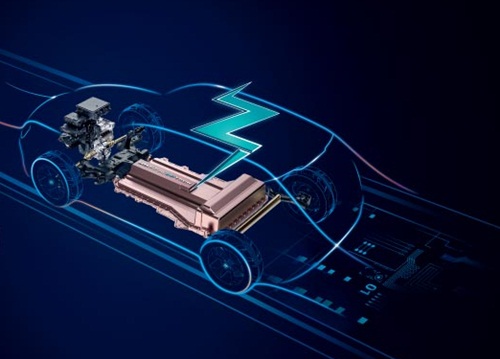
- The new technology will form the basis of Tata Motors’ future EVs, and with it the auto major will ramp up its presence in the electric vehicle segment. The new technology, branded ‘Ziptron’, will first be used on a model set for launch in early 2020.
- “Ziptron, a soon to be introduced EV powertrain technology, is a building block towards Tata Motors’ consistent strive for commonality, to drive economies of scale and to make new technologies affordable for the Indian consumers. It embodies distinctive characteristics: efficient high voltage system, zippy performance, long range, fast charging capability, battery with warranty of 8 years, and adherence to IP67 standard,” Tata Motors stated in a release.
- Tata Motors says Ziptron has been developed keeping Indian climatic and traffic conditions in mind, and also addresses typical EV buyers' concerns of performance, range and safety.
- While Tata Motors has not revealed final specifications as yet, company spokespersons announced that cars built with Ziptron will have a “minimum range of 250km” and will support fast charging. The battery pack comprises lithium-ion cells and features liquid cooling to maintain the ideal operating temperature. The battery pack comes in a high-strength steel casing and boasts an IP67 rating, assuring highest standards for waterproofing and dust protection. Tata Motors will offer a standard eight-year warranty on the battery pack and motor.
- The high-voltage 300V-plus permanent magnet synchronous electric motor also promises to be leagues ahead of the 72V AC induction-type motor on the Tigor EV in performance and output. The motor will come mated to a single-ratio transmission that has been optimised for Indian traffic. Ziptron cars will also feature drive modes to give drivers the option to maximise range or enhance performance.
- Speaking at the launch, Guenter Butschek, CEO and MD, Tata Motors said the state-of-art technology brand `Ziptron’ has been designed in-house while utilising the group’s global engineering network.
- “At the heart of our future EV line-up, this technology will deliver a thrilling driving experience to our customers aspiring to go-green. Rigorously tested across 1 million kms, Ziptron technology is well proven, advanced and reliable. With this technology, we hope to usher in a new wave of eMobility in India and accelerate faster adoption of EVs, supporting the government’s vision,” he added.
- Connected technology will also be part of the package on Tata’s upcoming electric cars giving buyers remote access to vehicle health, status and location reports.
- Ziptron technology comprises a highly efficient permanent magnet AC motor providing superior performance on demand. It also offers best in industry dust and water proof battery system meeting IP67 standards. Further, Ziptron utilises smart regenerative braking to charge the battery while on the drive, the company stated.
- Along with Ziptron, Tata Motors also rolled out the Ziptron Freedom 2.0 campaign. This campaign aims at highlighting how this technology breaks existing barriers and provides freedom from pollution, addresses range anxiety, and offers electrifying driving performance. Source: https://www.domain-b.com/
World's first fully electric plane takes to air for almost 15 minutes
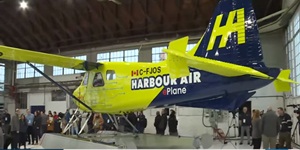
- The world's first fully electric commercial aircraft took its inaugural test flight on Tuesday, taking off from the Canadian city of Vancouver and offering hope that airlines may one day free themselves from polluting fossil fuels and end their polluting emissions.
- The first flight of the fully electric commercial aircraft took place on Tuesday around Vancouver, Canada. The whole flight lasted just 15 minutes.
- The plane was a 62-year-old, six-passenger seaplane that had been retrofitted with an electric motor. It was designed by Australian engineering firm MagniX and tested in partnership with Harbour Air, the world’s largest seaplane airline.
- Harbour Air says it plans to electrify its entire fleet by 2022, depending on whether it can secure the necessary safety and regulatory approvals. The aircraft can only fly about 100 miles (160 kilometers) for now, but that’s sufficient for the sort of short-hop journeys the airline needs.
- However, Harbour Air will have to wait at least two years before it can begin electrifying its fleet of more than 40 seaplanes. The e-plane needs to be tested further to confirm it is reliable and safe. In addition, the electric motor must be approved and certified by regulators.
- Harbour Air ferries half a million passengers a year between Vancouver, Whistler ski resort and nearby islands and coastal communities.
- "For me that flight was just like flying a Beaver, but it was a Beaver on electric steroids. I actually had to back off on the power," he said.
- "This proves that commercial aviation in all-electric form can work," said Roei Ganzarski, chief executive of Seattle-based engineering firm MagniX.
- Ganzarski said the technology would mean significant cost savings for airlines - not to mention zero emissions.
- "This signifies the start of the electric aviation age," he told reporters.
- Civil aviation is one of the fastest growing sources of carbon emissions as people increasingly take to the skies and new technologies have been slow to get off the ground.
- At 285 grammes of CO2 emitted per kilometre travelled by each passenger, airline industry emissions far exceed those from all other modes of transport, according to the European Environment Agency. The emissions contribute to global warming and climate change, which scientists say will unleash ever harsher droughts, superstorms, and sea-level rise.
- In Ottawa, transport minister Marc Garneau told reporters ahead of the maiden flight that if the flight proves successful. "it could set a trend for more environmentally friendly flying."
- While battery power can be used to fly about 160 kilometers on lithium battery power, Ganzarski said, "The range now is not where we'd love it to be, but it's enough to start the revolution."
- The aviation sector is a significant contributor to global carbon emissions, and a move to electric mode is the ultimate goal for many in the industry.Source: https://www.domain-b.com/
Driverless cars see fewer crashes than human-driven cars
than self-driving crash rates, the study found. A 2015 National Highway Traffic Safety Administration study found about 60 percent of property-damage-only crashes and 24 percent of all injury crashes are not reported to the police. California law requires all crashes involving self-driving vehicles be reported to police. Google spokesman Johnny Luu said the company asked Virginia Tech "to look into the topic given the interest and develop a robust methodology to be able to make meaningful comparison between regular cars on the road as well as our self-driving cars". Luu said the study "will be helpful making apples-to-apples comparisons moving forward". A study released in October by the University of Michigan Transportation Research Institute compared crash rates among Google, Delphi and Audi self-driving cars in 2013 and found they had a higher rate than for conventional cars. But that study noted the low volume of driver-less miles -- 1.2 million compared with 3 trillion miles driven annually on US roads. In December, California proposed state regulations that would require all autonomous cars to have a steering wheel, throttle and brake pedals when operating on California's public roads. A licensed driver would need to be in the driver's seat ready to take over in the event something went wrong. Google, eager to demonstrate its vehicles are safe, criticized the proposed rule, which it said would maintain "the same old status quo and falls short on allowing this technology to reach its full potential, while excluding those who need to get around but cannot drive". Source: domain-b.com, Image: @flickr.com/photos/markdoliner/7694478124
Brain Controlled Flight Advancing in Europe
Solar-powered plane breaks solo flight record
The solar-powered aircraft, Solar Impulse, flying from Japan to Hawaii, on the most perilous leg of a round-the-globe bid, has beaten the record for the longest solo flight, organisers said yesterday. They admitted though that veteran Swiss pilot Andre Borschberg was exhausted after over four days of continuous flying, which made the final 24 hours of flight particularly challenging. The plane was set to land this morning local time at Kalaeloa Airport on the main Hawaiian island of Oahu, some 20 miles (30 kilometers) west of Honolulu. By 7:30pm GMT (1am IST, Friday) on Thursday, Solar Impulse 2 had traveled 86 per cent of the way to the tropical US state, after flying 7,075 kilometers. However, it was in the process of crossing a cold front that required careful navigation on the part of Borschberg, which would significantly increase stress levels for the 62-year-old. Borschberg had so far flown over 97 hours easily beating the previous longest solo endurance flight undertaken in 2006. The Japan to Hawaii trip was expected to take 120 hours. The Swiss aviator was napping for only 20 minutes at a time so as to maintain control of the pioneering plane and has on the plane a parachute and life raft, in case he needed to ditch in the Pacific. The experimental solar-powered aircraft left Japan around 6pm GMT (11:30pm IST) on Sunday the early hours of Monday local time after spending a month in the central city of Nagoya. The aircraft, piloted alternately by Swiss explorers Andre Borschberg and Bertrand Piccard, embarked on its 22,000-mile (35,000-km) journey around the world from Abu Dhabi on 9 March. ''Can you imagine that a solar powered airplane without fuel can now fly longer than a jet plane!'' said Piccard in a statement. ''This is a clear message that clean technologies can achieve impossible goals.'' The plane, weighs about as much as a family sedan and has 17,000 solar cells across its wingspan. The aircraft was expected to make the trip around the globe in some 25 flight days, broken up into 12 legs at speeds between 30 to 60 miles per hour. The Solar Impulse 2 initially left Nanjing, China, on 31 May for Hawaii, but its bid was cut short a day later due to what Borschberg termed ''a wall of clouds'' over the Pacific. The plane landed in the central Japanese city of Nagoya. The solo record was earlier set in 2006 by American adventurer Steve Fossett, who flew the Virgin Atlantic Global Flyer for 76 hours non-stop. Source: domain-b.com
Solar-powered Formula E can overtake Formula 1, says Richard Branson
The Virgin tycoon believes all-electric and solar-powered racing cars will prove more attractive to sponsors and racing enthusiasts within the next four or five years. Richard Branson celebrates with Formula E inaugural champion Nelson Piquet Jr in London. Richard Branson, the British billionaire and owner of the Virgin brand, suggested at the weekend that the pace of development of electric vehicles (EV) is so great that the all-electric Formula E racing series will soon surpass Formula 1 as the de facto choice for racing enthusiasts and sponsors. Speaking ahead of the U.K.’s first-ever 100% electric motor car race in London at the weekend – which featured solar-charged vehicles at the Battersea Park track in front of 60,000 spectators – Branson was bullish on EVs’ potential to seriously disrupt the automobile industry in all its guises."I think there is still going to be room for Formula 1 in the next few years, but four or five years from now you will see Formula E overtaking Formula 1," said the tycoon. "Just as clean energy type of businesses will power ahead of other types of businesses." Branson said that he is "willing to bet" that 20 years from now no new vehicles will be made anywhere in the world that are not powered by an electric battery. "The current technology is antiquated and polluting and will disappear. Like other sectors, everything will be clean and companies that move quickest in that area are going to dominate the marketplace." The Formula E racing series – the first season of which was fittingly won at the weekend by Nelson Piquet Jr, the son of Formula 1 legend Nelson Piquet – has attracted a strong following in a relatively short space of time since its opening race in Beijing last year. Hailed as a "sexy" breakthrough in clean energy by Branson, the Formula E series is set to push clean technology to its limits in the same way that Formula 1 drove the development of traditional motoring. "Ten or 20 years ago, people might have thought electric cars were what granny drove, but now they see wonderful hybrids, Elon Musk’s cars, or Formula E vehicles going 140mph around the track," added Branson. "I think it will spur on the revolution the world needs." Showcasing the power of solar: The final race in London at the weekend was the first in the world to use cars that have been regularly charged by solar, with even the safety and medical cars powered by solar-powered batteries located in the pit lane. The entire event was also connected to a small off-grid solar station consisting of 26 solar panels. This tiny array was used to power the big screens that displayed the race, as well as cell phone recharging stations and ticket scanners. Although the 10 two-car teams were not directly solar-powered, the potential is there in the future, said FIA Formula E chief executive Alejandro Agag. "The problem with solar is the rhythm at which the energy is generated or the amount of panels you need at any given moment. To charge all the racing cars, we would have to cover the whole park with solar panels." Agag added, however, that Formula E’s denouement demonstrated what is possible. "Now what you need is to be able to store the energy because if you can store it [the solar power] for a day you have enough energy to charge the cars." Agag spoke at the annual Low Carbon Vehicle Partnership conference in London last week, where it was revealed that the U.K. plans to have "every car on the road ultra low emission" by 2050. "One day, electric vehicles will be the clear choice for the majority of drivers," said Andrew Jones MP. "This is a huge opportunity to make the U.K. one of the world’s leading markets and producers of electric cars." According to government forecasts, replacing the country’s fleet of private cars with EVs would help to prevent as many as 29,000 deaths – caused by pollutants – annually. A study in March by Cambridge Econometrics found that the U.K. could cut its oil imports by 40% if six million EVs were deployed on British roads. This would also lead to a 47% drop in carbon emissions by 2030, saving each motorist more than $1,500 a year in fuel bills. The Low Carbon Vehicle Partnership surveyed motorists about their future purchases and found tha t almost half polled expect their next car to be an EV. "The world is moving in our direction," said Agag. "It is not so easy to change the minds of 50 and 60 year olds, but the important ones are the kids because when they become 18 they will want to buy a car. We can have an effect on new generations." Source: PV-Magazine
Wireless Online Electric Vehicle Charges On The Move, No Need To Stop To Recharge Batteries
Nissan's 100 percent electric commercial vehicle to hit road next year
World record-breaking electric vehicle journey crosses finish line
Nissan develops stylish ?Bladeglider? EV

Gen-next solar plane to fly around the world in 2015
Nissan develops stylish ?Bladeglider? EV
.jpg)
Car manufacturer Nissan has developed a new and stylish ‘wedge’ shaped electric car called the ‘BladeGlider’ which it describes as a proposal for the future direction of Nissan EV development The company developed the vehicle in order to give both the driver and passengers a new, sustainable and exhilarating driving experience. It has a unique architecture which Nissan describes as ‘targeting the visionary individual’ and incorporates a ‘pioneering’ spirit that distinguishes it from anything yet envisioned for EV’s. “The goal was to revolutionise the architecture of the vehicle to provoke new emotions, provide new value and make visible for consumers how Zero Emissions can help redefine our conception of vehicle basics” said Francois Bancon, division general manager of Product Strategy and Product Planning at Nissan. The car has a narrow front track which is designed to challenge the orthodoxy of car design that the company says has dominated the roads since the earliest days of the internal combustion engine. The concept has its roots in the aerial images of a soaring, silent, glider and the triangular shape of a high performance "swept wing" aircraft. This means that the main developmental focus was aerodynamics in order to achieve low drag and generating a road-hugging down force. “BladeGlider was conceived around delivering a glider-like exhilaration that echoes its lightweight, downsized hyper-efficient aerodynamic form” said Shiro Nakamura, Nissan's senior vice president and chief creative officer. “This design is more than revolutionary; it's transformational, applying our most advanced electric drive-train technology and racetrack-inspired styling in the service of a new dimension of shared driving pleasure.” The BladeGliders front wheels are set close together in order to reduce drag and enhance manoeuvrability for high-G cornering power. This in turn is assisted by a 30/70 front/rear weight distribution ratio while the aerodynamic downforce is created by a highly rigid yet lightweight carbon-fibre underbody. In-wheel motors provide rear-wheel propulsion with independent motor management, while also contributing to freedom of upper body design and space-efficient packaging. Once the BladeGlider matures into a production car, it will be the first time Nissan has used in-wheel motors. The car’s electric motors employ lithium-ion batteries which have already demonstrated proven performance in the Nissan LEAF EV. In the Blade Glider the battery modules are mounted low and towards the rear to enhance stability and handling. The cockpit inside the car’s canopy seats three occupants in a triangular configuration with the driver sat centre-forward. The steering wheel is like that inside an aircraft and the dashboard incorporates state-of-the-art instrumentation technology which includes an IT system displaying relief maps and atmospheric data. “I think that the excitement of the racing car should be mirrored in the excitement of driving the road car” said Ben Bowlby, director of Nissan Motorsport Innovation, who has supported the BladeGlider's development. “I think there are elements we can bring from the race track to make these future road cars more exciting, more fulfilling and give greater driving pleasure.”For additional information: Nissan Source: Renewable Energy Magazine, Image


